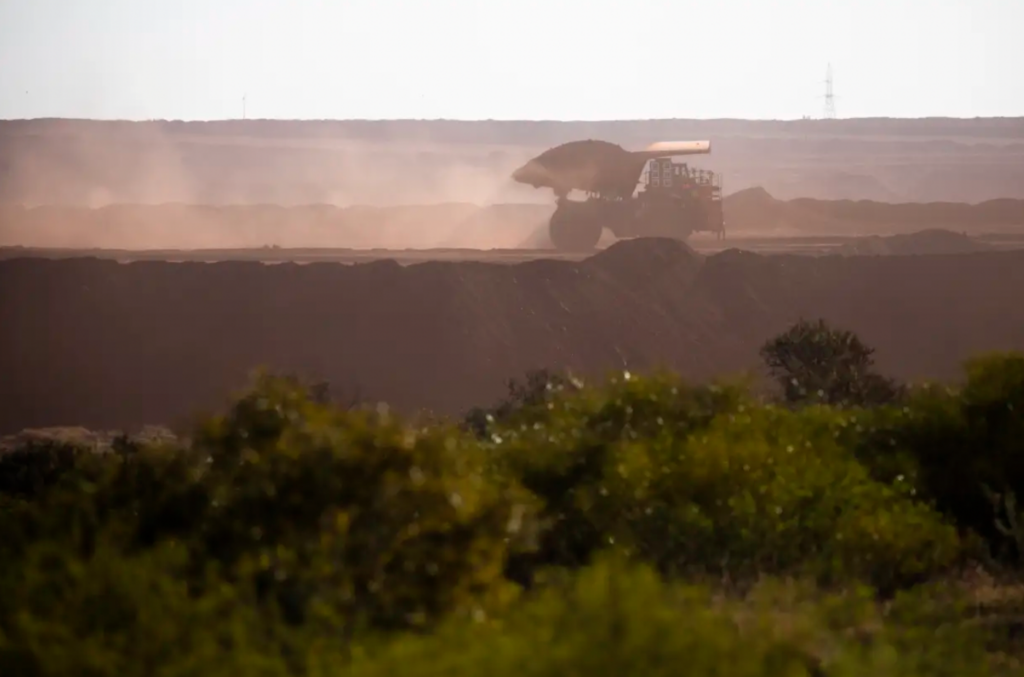
Article by Brad Thompson courtesy of the Australian Financial Review.

Hancock Prospecting says it wants Rio Tinto to open new mines under a long-standing partnership as it moves to boost iron ore production, but warns the Albanese government’s policies are posing a threat to investment.
The resources group, owned by billionaire businesswoman Gina Rinehart, said the government had put in place “necessary” barriers delaying the development of new projects under the Hope Downs partnership that so far involves the Hope 1, Hope 4 and Baby Hope mines in Western Australia.
Roy Hill has about a decade of life left in it, Hancock Prospecting says. Krystle Wrightnone
Mrs Rinehart wants to see the Hope 2 project along with Hope 3, 5 and 6 developed sooner rather than later while Rio is looking at other expansions in the Pilbara and further afield to the Simandou project in Guinea.
Hancock executive director Tad Watroba said Rio’s push into Guinea came against a backdrop of growing approval and investment hurdles in Australia and would have the effect of reducing Rio’s growth in WA.
Hancock has long railed against government red tape and overlapping approval processes that it ran into while developing its flagship Roy Hill mine, which is not part of the Rio partnership.
Mr Watroba said Roy Hill, which has propelled Mrs Rinehart to the top of The Australian Financial Review Rich List, had about a decade of life remaining without additional approvals and investment.
“Roy Hill currently exports more than 60 million tonnes a year, Atlas Iron exports about 10 million tonnes, plus [Hancock] accounts for approximately 25 million tonnes from the Hope Downs mines, with further opportunities, should Rio be willing to further expand in the Pilbara,” he said.
“Rio has announced that it will proceed with Simandou in Guinea, which will necessarily reduce their expansions in Australia.
“From a group perspective we are aiming to expand our tonnage significantly with additional projects in the pipeline, approvals permitting. This will require significant investments, and studies are underway, but such investments will be subject to all relevant approvals.”
Rio started the approvals process for mining of Hope Downs 2 and Bedded Hilltop, both covered by the joint venture, several years ago and expects to start production around 2026. Mining of Hope Downs 2 and the Bedded Hilltop deposits are referred to in Rio’s plans as “Hope Downs 1 sustaining” because they will feed into the existing Hope Downs 1 infrastructure.
But Hancock and South Korean steelmaker POSCO have stalled a $1 billion investment in Senex Energy in December based on the federal government’s intervention in the gas market. Hancock has also criticised Labor’s industrial relations agenda and the emission reduction policy for heavy industry referred to as the safeguard mechanism.
Other big resources industry players are also concerned about what emerges from an overhaul of the Environmental Protection and Biosecurity Conservation Act and the potential for even greater duplication with state approval processes, and in WA about new Aboriginal heritage laws that come into effect on July 1.
Mr Watroba said Hancock wanted to develop more Hope Downs mines, but its partner Rio was also looking elsewhere.
“We want to invest as much as we can in Australia, to develop Australia’s mineral resources, creating thousands of high-paying jobs doing so and significant benefits to the regions and states where we operate and the country more broadly,” he said.
“But Australia is not the only country with natural resources, and if we face, as we increasingly do, significant, or unnecessary barriers from governments then we will have no choice but to look elsewhere.
“Look at our Hope Downs partner, Rio Tinto, progressing the Simandou project in Guinea when there are more Hope Downs projects in the Pilbara we’d like to develop.
“There’s a pool of investment capital and if we don’t make ourselves as a country as attractive to that investment as possible, it will simply be allocated elsewhere, to the detriment of Australia and Australians.”
Rio declined to comment on the Hancock assessment of investment priorities or on the government policy issues.
Simon Trott, who has run Rio’s iron ore business since 2021, was a key member of the team behind the Hope Downs partnership with Hancock struck in 2005 that involved the ASX-listed mining giant lending money to Hancock to help finance development.
Speaking at Rio’s capital markets day last November, Mr Trott warned: “Risks to approvals time frames in the Pilbara are increasing.”
Mr Trott said the next Pilbara mine on Rio’s horizon was $US2 billion Western Range, a joint venture with Chinese steelmaking giant Baowu expected to start production in 2025.
On Simandou, he said development would help to “facilitate another, multi-decade partnership with our largest shareholder, Chinalco, and Baowu, our largest iron ore customer”.
It is estimated Rio has invested some $US27 billion in the Pilbara in the past 10 years, with the lion’s share ploughed into new mines and infrastructure.
Mr Trott has talked up the Rhodes Ridge deposit, which sits close to the Hope Downs mines, as having the potential to become a mainstay of Rio’s iron ore operations in coming decades.
Rhodes Ridge was at the centre of legal battles between Hancock Prospecting and the heirs to the fortune of Peter Wright, including Rich Lister Angela Bennett. Mrs Rinehart’s father, Lang Hancock, and Mr Wright were business partners who helped pioneer the iron ore industry in WA.
Rio moved a step closer to developing Rhodes Ridge with Wright Prospecting under a preliminary agreement to modernise their decades-long partnership. However, Rio does not anticipate a start in mining at Rhodes Ridge in the next 10 years. In the interim, Rio has a host of other Pilbara growth projects on its agenda.















